Inpage Navigation Section: Overview
The Ninja 1000SX has character without compromise. Infused with the Ninja spirit craved by discerning solo sportsbike riders, the Ninja 1000SX takes the concept further with SX sport touring versatility to share with a fellow traveler. From traction control to cruise control, the Ninja 1000SX has the tech for the ride.
Colours
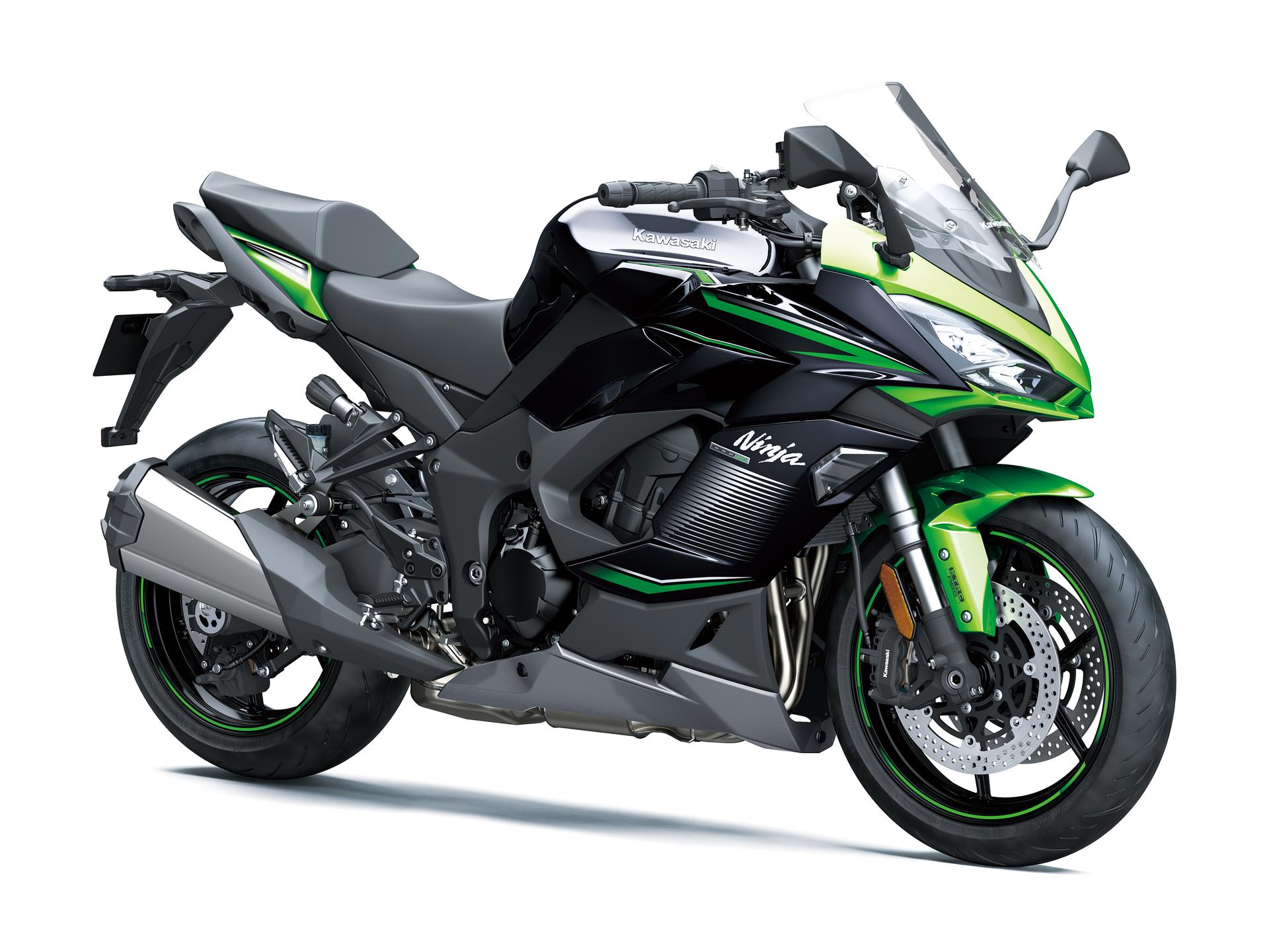
Show all
Show less
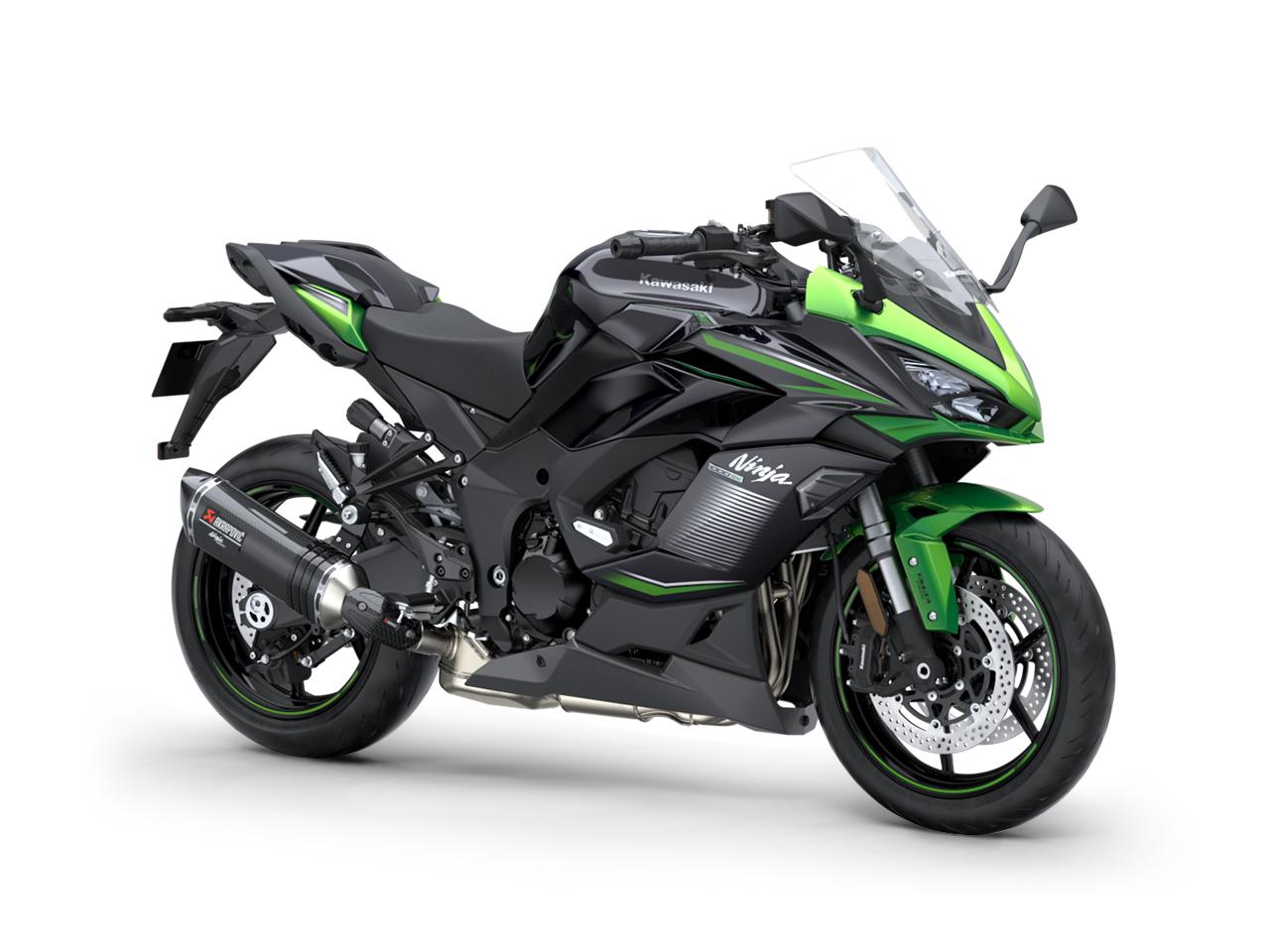
Edition Accessories
Show all
Show less
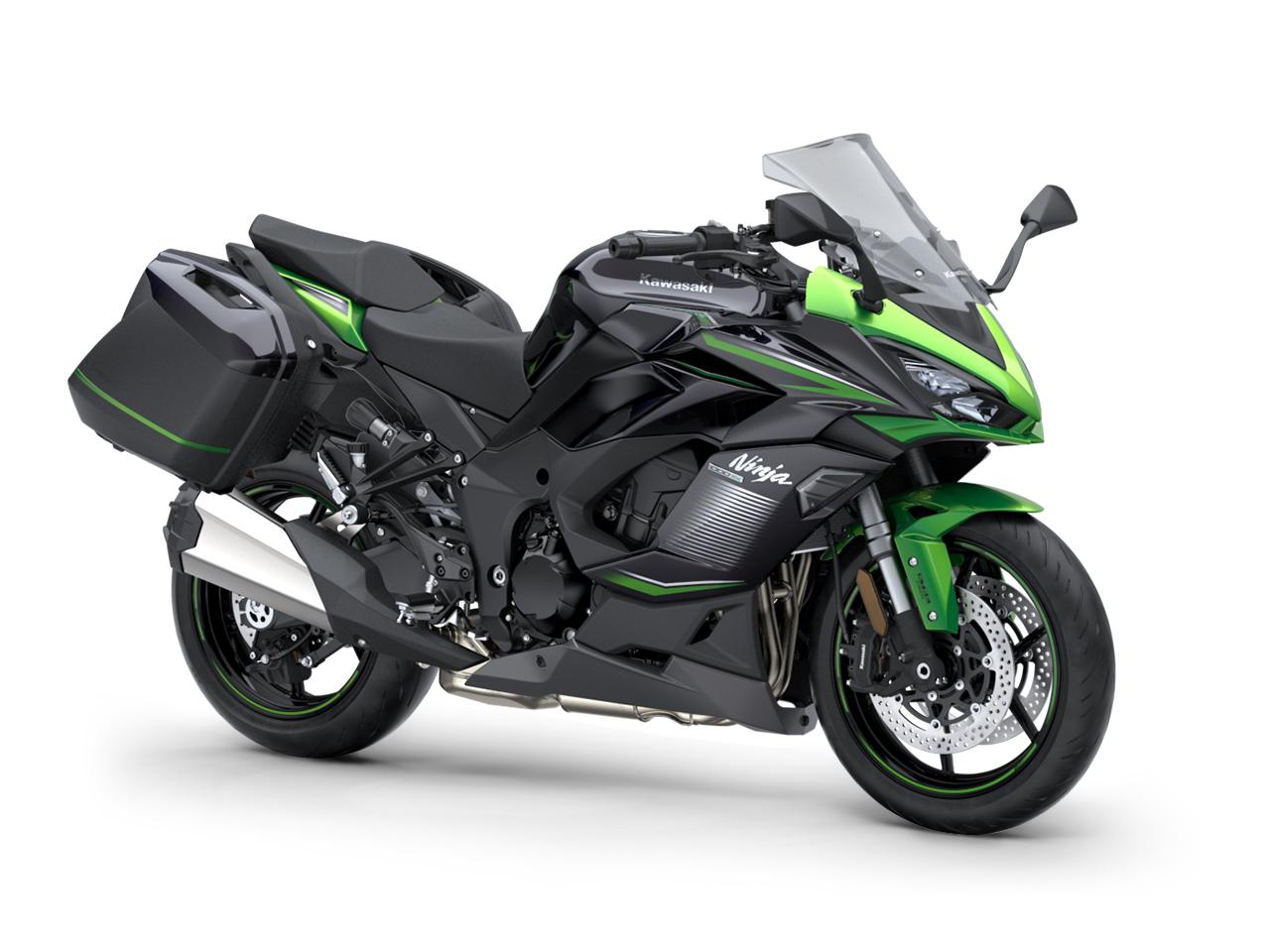
Edition Accessories
Show all
Show less
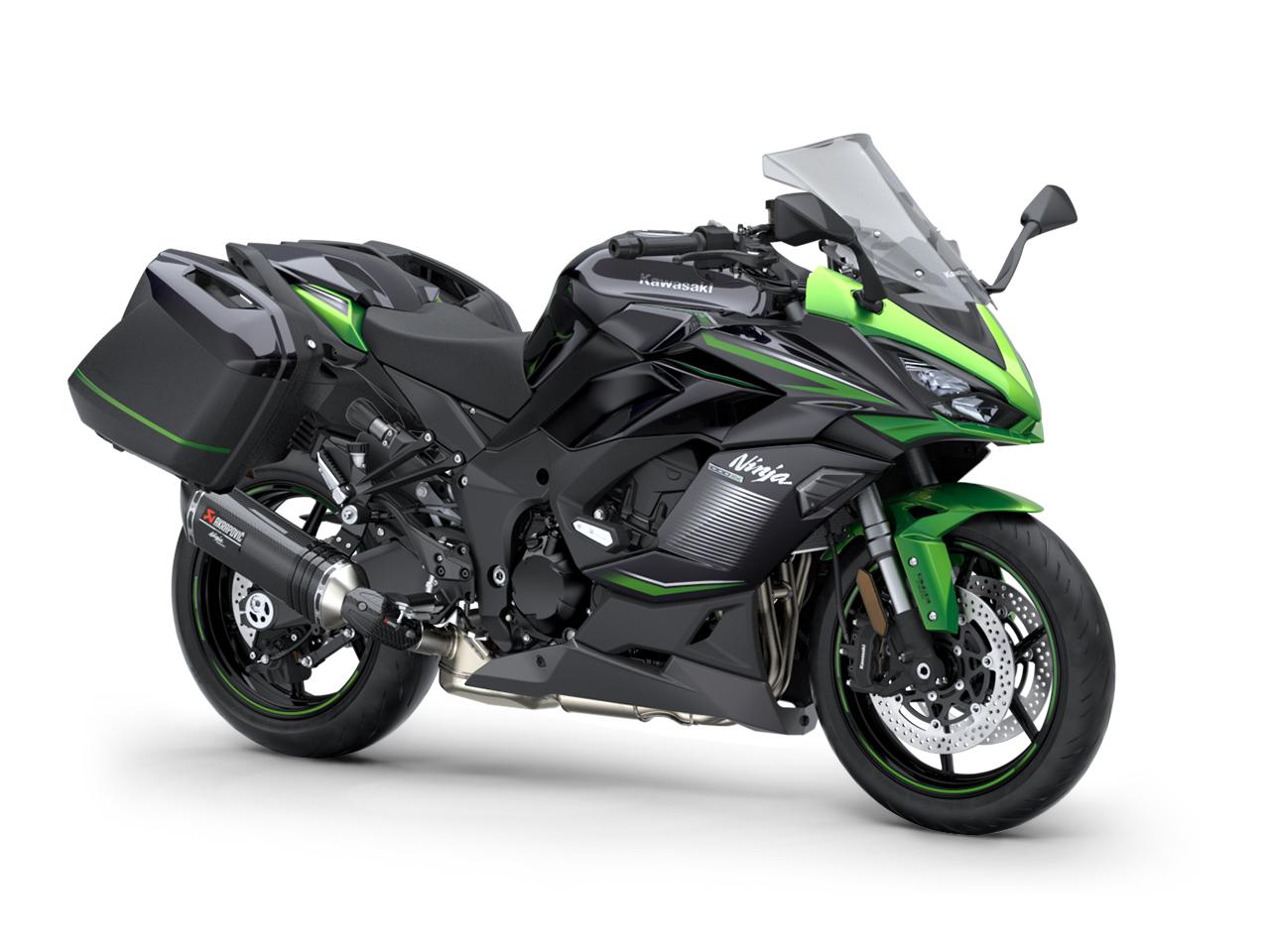
Edition Accessories
Show all
Show less
€14,990.00
Inpage Navigation Section: Gallery
Inpage Navigation Section: Features & Specs
Revisions to the fairings, and an all-new single-sided muffler give the Ninja 1000SX sportier, more dynamic styling that reflects its sport riding potential and contributes to a stronger Ninja family image. All-LED lighting adds a highclass touch.

Revisions to the fairings, and an all-new single-sided muffler give the Ninja 1000SX sportier, more dynamic styling that reflects its sport riding potential and contributes to a stronger Ninja family image. All-LED lighting adds a highclass touch.
Complementing the Ninja 1000SX’s exhilarating engine character, the quick shifter enables clutchless upshifts and downshifts for seamless acceleration and quick and easy deceleration.

Complementing the Ninja 1000SX’s exhilarating engine character, the quick shifter enables clutchless upshifts and downshifts for seamless acceleration and quick and easy deceleration.
Bridgestone Battlax Hypersport S22 tyres contribute to lighter handling, while offering enhanced grip in both dry and wet conditions, which translates to greater rider confidence and enjoyment.

Bridgestone Battlax Hypersport S22 tyres contribute to lighter handling, while offering enhanced grip in both dry and wet conditions, which translates to greater rider confidence and enjoyment.
A Bluetooth chip built into the instrument panel enables riders to connect to their motorcycle wirelessly. Using the smartphone application “RIDEOLOGY THE APP,” a number of instrument functions can be accessed, contributing to an enhanced motorcycling experience.

A Bluetooth chip built into the instrument panel enables riders to connect to their motorcycle wirelessly. Using the smartphone application “RIDEOLOGY THE APP,” a number of instrument functions can be accessed, contributing to an enhanced motorcycling experience.
Wind protection afforded by the full-fairing bodywork is complemented by a new windshield with four available positions. As before, the windshield is adjustable by hand (without tools).

Wind protection afforded by the full-fairing bodywork is complemented by a new windshield with four available positions. As before, the windshield is adjustable by hand (without tools).
The thicker, wider rider and passenger seats deliver increased comfort, facilitating longer hours in the saddle. The rear seat cushion is wider than its base, offering a greater surface area. Furthermore, a host of accessory seat options are available to cater to rider and passenger needs and preference.

The thicker, wider rider and passenger seats deliver increased comfort, facilitating longer hours in the saddle. The rear seat cushion is wider than its base, offering a greater surface area. Furthermore, a host of accessory seat options are available to cater to rider and passenger needs and preference.
The powerful 1,043 cm3 liquid-cooled, 4-stroke In-line Four engine pulls strongly from all rpm and does not let up before the redline. The engine delivers superb response, a strong mid-range hit and an intoxicating intake howl – every twist of the throttle rewards the rider with a physically and aurally exhilarating sensation. In addition to cleaner emissions for 2020, a change to Electronic Throttle Valves enables the addition of Electronic Cruise Control, while also contributing to smooth power delivery.

The powerful 1,043 cm3 liquid-cooled, 4-stroke In-line Four engine pulls strongly from all rpm and does not let up before the redline. The engine delivers superb response, a strong mid-range hit and an intoxicating intake howl – every twist of the throttle rewards the rider with a physically and aurally exhilarating sensation. In addition to cleaner emissions for 2020, a change to Electronic Throttle Valves enables the addition of Electronic Cruise Control, while also contributing to smooth power delivery.
All-new exhaust 1 system has a 4-into-2-into pre-chamberinto- 1 arrangement, contributing to the Ninja 1000SX’s enhanced sporty looks. The singlesided muffler arrangement saves approximately 2 kg in weight.

All-new exhaust 1 system has a 4-into-2-into pre-chamberinto- 1 arrangement, contributing to the Ninja 1000SX’s enhanced sporty looks. The singlesided muffler arrangement saves approximately 2 kg in weight.
Kawasaki’s cruise control system allows a desired speed to be maintained with the simple press of a button. Once activated, the rider does not have to constantly apply the throttle. This reduces stress on the right hand when traveling long distances, enabling relaxed cruising and contributing to a high level of riding comfort.

Kawasaki’s cruise control system allows a desired speed to be maintained with the simple press of a button. Once activated, the rider does not have to constantly apply the throttle. This reduces stress on the right hand when traveling long distances, enabling relaxed cruising and contributing to a high level of riding comfort.
The compact new all-digital TFT colour instrumentation gives the cockpit a high-tech, highgrade appearance. The new meter also offers additional features unavailable on the previous model.

The compact new all-digital TFT colour instrumentation gives the cockpit a high-tech, highgrade appearance. The new meter also offers additional features unavailable on the previous model.
The Ninja 1000SX’s highly rigid aluminium frame offers a high degree of mass centralisation, offering a balance of agility and firm handling. The bike responds quickly to rider input, while offering an excellent ability to soak up bumps and ruts. Highly composed, the Ninja 1000SX’s superb straight-line stability and its planted feeling in corners make it easy to spend long hours in the saddle.

The Ninja 1000SX’s highly rigid aluminium frame offers a high degree of mass centralisation, offering a balance of agility and firm handling. The bike responds quickly to rider input, while offering an excellent ability to soak up bumps and ruts. Highly composed, the Ninja 1000SX’s superb straight-line stability and its planted feeling in corners make it easy to spend long hours in the saddle.
The mounting system for the accessory panniers allows the panniers to be attached and removed very simply, contributing to increased convenience. Seamlessly integrating the panniers with the rear of the bike, the clean-mount system positions the panniers close to the bike centreline, its clean clutter-free design ensuring the rear of the bike still looks good with the panniers removed.

The mounting system for the accessory panniers allows the panniers to be attached and removed very simply, contributing to increased convenience. Seamlessly integrating the panniers with the rear of the bike, the clean-mount system positions the panniers close to the bike centreline, its clean clutter-free design ensuring the rear of the bike still looks good with the panniers removed.
Revisions to the fairings, and an all-new single-sided muffler give the Ninja 1000SX sportier, more dynamic styling that reflects its sport riding potential and contributes to a stronger Ninja family image. All-LED lighting adds a highclass touch.

Revisions to the fairings, and an all-new single-sided muffler give the Ninja 1000SX sportier, more dynamic styling that reflects its sport riding potential and contributes to a stronger Ninja family image. All-LED lighting adds a highclass touch.
Complementing the Ninja 1000SX’s exhilarating engine character, the quick shifter enables clutchless upshifts and downshifts for seamless acceleration and quick and easy deceleration.

Complementing the Ninja 1000SX’s exhilarating engine character, the quick shifter enables clutchless upshifts and downshifts for seamless acceleration and quick and easy deceleration.
Bridgestone Battlax Hypersport S22 tyres contribute to lighter handling, while offering enhanced grip in both dry and wet conditions, which translates to greater rider confidence and enjoyment.

Bridgestone Battlax Hypersport S22 tyres contribute to lighter handling, while offering enhanced grip in both dry and wet conditions, which translates to greater rider confidence and enjoyment.
A Bluetooth chip built into the instrument panel enables riders to connect to their motorcycle wirelessly. Using the smartphone application “RIDEOLOGY THE APP,” a number of instrument functions can be accessed, contributing to an enhanced motorcycling experience.

A Bluetooth chip built into the instrument panel enables riders to connect to their motorcycle wirelessly. Using the smartphone application “RIDEOLOGY THE APP,” a number of instrument functions can be accessed, contributing to an enhanced motorcycling experience.
Wind protection afforded by the full-fairing bodywork is complemented by a new windshield with four available positions. As before, the windshield is adjustable by hand (without tools).

Wind protection afforded by the full-fairing bodywork is complemented by a new windshield with four available positions. As before, the windshield is adjustable by hand (without tools).
The thicker, wider rider and passenger seats deliver increased comfort, facilitating longer hours in the saddle. The rear seat cushion is wider than its base, offering a greater surface area. Furthermore, a host of accessory seat options are available to cater to rider and passenger needs and preference.

The thicker, wider rider and passenger seats deliver increased comfort, facilitating longer hours in the saddle. The rear seat cushion is wider than its base, offering a greater surface area. Furthermore, a host of accessory seat options are available to cater to rider and passenger needs and preference.
The powerful 1,043 cm3 liquid-cooled, 4-stroke In-line Four engine pulls strongly from all rpm and does not let up before the redline. The engine delivers superb response, a strong mid-range hit and an intoxicating intake howl – every twist of the throttle rewards the rider with a physically and aurally exhilarating sensation. In addition to cleaner emissions for 2020, a change to Electronic Throttle Valves enables the addition of Electronic Cruise Control, while also contributing to smooth power delivery.

The powerful 1,043 cm3 liquid-cooled, 4-stroke In-line Four engine pulls strongly from all rpm and does not let up before the redline. The engine delivers superb response, a strong mid-range hit and an intoxicating intake howl – every twist of the throttle rewards the rider with a physically and aurally exhilarating sensation. In addition to cleaner emissions for 2020, a change to Electronic Throttle Valves enables the addition of Electronic Cruise Control, while also contributing to smooth power delivery.
All-new exhaust 1 system has a 4-into-2-into pre-chamberinto- 1 arrangement, contributing to the Ninja 1000SX’s enhanced sporty looks. The singlesided muffler arrangement saves approximately 2 kg in weight.

All-new exhaust 1 system has a 4-into-2-into pre-chamberinto- 1 arrangement, contributing to the Ninja 1000SX’s enhanced sporty looks. The singlesided muffler arrangement saves approximately 2 kg in weight.
Kawasaki’s cruise control system allows a desired speed to be maintained with the simple press of a button. Once activated, the rider does not have to constantly apply the throttle. This reduces stress on the right hand when traveling long distances, enabling relaxed cruising and contributing to a high level of riding comfort.

Kawasaki’s cruise control system allows a desired speed to be maintained with the simple press of a button. Once activated, the rider does not have to constantly apply the throttle. This reduces stress on the right hand when traveling long distances, enabling relaxed cruising and contributing to a high level of riding comfort.
The compact new all-digital TFT colour instrumentation gives the cockpit a high-tech, highgrade appearance. The new meter also offers additional features unavailable on the previous model.

The compact new all-digital TFT colour instrumentation gives the cockpit a high-tech, highgrade appearance. The new meter also offers additional features unavailable on the previous model.
The Ninja 1000SX’s highly rigid aluminium frame offers a high degree of mass centralisation, offering a balance of agility and firm handling. The bike responds quickly to rider input, while offering an excellent ability to soak up bumps and ruts. Highly composed, the Ninja 1000SX’s superb straight-line stability and its planted feeling in corners make it easy to spend long hours in the saddle.

The Ninja 1000SX’s highly rigid aluminium frame offers a high degree of mass centralisation, offering a balance of agility and firm handling. The bike responds quickly to rider input, while offering an excellent ability to soak up bumps and ruts. Highly composed, the Ninja 1000SX’s superb straight-line stability and its planted feeling in corners make it easy to spend long hours in the saddle.
The mounting system for the accessory panniers allows the panniers to be attached and removed very simply, contributing to increased convenience. Seamlessly integrating the panniers with the rear of the bike, the clean-mount system positions the panniers close to the bike centreline, its clean clutter-free design ensuring the rear of the bike still looks good with the panniers removed.

The mounting system for the accessory panniers allows the panniers to be attached and removed very simply, contributing to increased convenience. Seamlessly integrating the panniers with the rear of the bike, the clean-mount system positions the panniers close to the bike centreline, its clean clutter-free design ensuring the rear of the bike still looks good with the panniers removed.
KIBS (Kawasaki Intelligent anti-lock Brake System) is a high-precision brake system designed specifically for supersport models, offering highly efficient braking while maintaining natural feel.
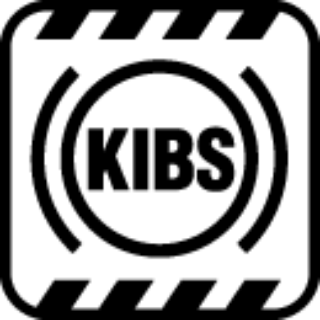
Kawasaki developed KIBS to take into account the particular handling characteristics of supersport motorcycles, ensuring highly efficient braking with minimal intrusion during hard sport riding. It is the first mass-production brake system to link the ABS ECU (Electronic Control Unit) and engine ECU. In addition front and rear wheel speed, KIBS monitors front brake caliper hydraulic pressure, throttle position, engine speed, clutch actuation and gear position. This diverse information is analysed to determine the ideal front brake hydraulic pressure. Through precise control, the large drops in hydraulic pressure seen on standard ABS systems can be avoided. Additionally, the tendency on supersport models for the rear wheel to lift under heavy braking can be suppressed and rear brake controllability can be maintained when downshifting.
Horizontal Back-link Rear Suspension arranges its shock unit horizontally, greatly contributing to efficient use of space and mass centralisation.

Compared to Kawasaki's traditional Uni-Trak rear suspension, which mounts the shock unit vertically, with Horizontal Back-link rear suspension, the shock unit is almost horizontal. Kawasaki's original suspension arrangement locates the shock unit very close to the bike's centre of gravity, greatly contributing to mass centralisation. And because there is no linkage or shock unit protruding beneath the swingarm, this frees up space for a larger exhaust pre-chamber (an exhaust expansion chamber situated just upstream of the silencer). With a larger pre-chamber, silencer volume can be reduced, and heavy exhaust components can be concentrated closer to the centre of the bike, further contributing to mass centralisation. The result is greatly improved handling. Another benefit is that the shock unit is placed far away from exhaust heat. Because it is more difficult for heat from the exhaust system to adversely affect suspension oil and gas pressure, suspension performance is more stable. Horizontal Back-link rear suspension offers numerous secondary benefits like this.

Designed to help riders maximise their acceleration on the circuit by enabling clutchless upshifts with the throttle fully open, KQS detects that the shift lever has been actuated and sends a signal to the ECU to cut ignition so that the next gear can be engaged without having to use the clutch. On models that offer clutchless downshifts, during deceleration the system automatically controls engine speed so that the next lower gear can be selected without operating the clutch.
KCMF (Kawasaki Cornering Management Function) monitors engine and chassis parameters throughout the corner.

KCMF monitors engine and chassis parameters throughout the corner from entry, through the apex, to corner exit modulating brake force and engine power to facilitate smooth transition from acceleration to braking and back again, and to assist riders in tracing their intended line through the corner. KCMF oversees the following systems (where available): KTRC (including traction, wheelie and sliding control), KIBS (including pitching control), Kawasaki Engine Brake Control
Electronic Throttle Valves allow the ECU to deliver the ideal amount of fuel and air to the engine.

Kawasaki's fully electronic throttle actuation system enables the ECU to control the volume of both the fuel (via fuel injectors) and the air (via throttle valves) delivered to the engine. Ideal fuel injection and throttle valve position results in smooth, natural engine response and the ideal engine output. The system also makes a significant contribution to reduced emissions. Electronic throttle valves also enable more precise control of electronic engine management systems like S-KTRC and KTRC, and allow the implementation of electronic systems like KLCM, Kawasaki Engine Brake Control, and Electronic Cruise Control.
Combined with Kawasaki’s proprietary dynamic modelling program, input from the IMU (Inertial Measurement Unit) enables even more precise chassis orientation awareness, the key to bringing Kawasaki’s electronics to the next level.

IMU means Enhanced Chassis Orientation Awareness. The strength of Kawasaki's cutting-edge electronics has always been the highly sophisticated programming that, using minimal hardware, gives the ECU an accurate real-time picture of what the chassis is doing. Kawasaki's proprietary dynamic modelling program makes skillful use of the magic formula tyre model as it examines changes in multiple parameters, enabling it to take into account changing road and tyre conditions. The addition of an IMU (Inertial Measurement Unit) enables inertia along 6 DOF (degrees of freedom) to be monitored. Acceleration along longitudinal, transverse and vertical axes, plus roll rate and pitch rate are measured. The yaw rate is calculated by the ECU. This additional feedback contributes to an even clearer real-time picture of chassis orientation, enabling even more precise management for control at the limit. With the addition of the IMU and the latest evolution of Kawasaki's advanced modelling software, Kawasaki's electronic engine and chassis management technology takes the step to the next level changing from setting-type and reaction-type systems to feedback-type systems to deliver even greater levels of riding excitement.
Based on racing technology, the Assist & Slipper Clutch acts as both a back-torque limiter and a self-servo mechanism that enables a lighter clutch lever pull.

Based on feedback from racing activities, the Assist & Slipper Clutch uses two types of cams (an assist cam and a slipper cam) to either drive the clutch hub and operating plate together or apart. Under normal operation, the assist cam functions as a self-servo mechanism, pulling the clutch hub and operating plate together to compress the clutch plates. This allows the total clutch spring load to be reduced, resulting in a lighter clutch lever feel when operating the clutch. When excessive engine braking occurs as a result of quick downshifts (or an accidental downshift) the slipper cam comes into play, forcing the clutch hub and operating plate apart. This relieves pressure on the clutch plates to reduce back-torque and helps prevent the rear tyre from hopping and skidding. This race-style function is particularly useful when sport or track riding.
3-Mode KTRC (Kawasaki TRaction Control), Kawasaki's most advanced traction control system, offers a selection of modes to suit a variety of riding situations, from sport riding to touring.

3-mode KTRC combines the traction control technology of both 1-mode KTRC, which provides enhanced stability in slippery situations by preventing wheel slip, and S-KTRC, which helps maintain optimum traction in sport riding situations by predicting the rear wheel slip ratio during acceleration, into a single system. The convenient handle switch allows the type of traction control to be changed instantly by selecting one of the three modes, even while riding. Modes 1 and 2 maintain optimum traction during cornering, like S-KTRC. Designed with sport riding in mind, they enable sharp acceleration out of corners by maximizing forward drive from the rear wheel. Modes 1 and 2 differ in the amount that they intervene. Mode 1, set for dry, good-grip road conditions, maintains the ideal slip ratio to ensure optimum traction. Mode 3 operates like 1-mode KTRC, reducing power to allow grip to be regained when rear wheel spin is detected. It is ideal when riding in slippery conditions or in the wet. Enabling riders to easily change traction control character, 3-mode KTRC is Kawasaki's most advanced engine management system.
Power Mode selection allows engine power delivery to be changed to suit the riding situation.
Models equipped with multiple Power Modes offer riders an easily selectable choice of engine power delivery to suit riding conditions or preference. In addition to Full Power mode, one (Low) or two (Middle, Low) alternate mode(s) in which maximum power is limited and throttle response is milder are provided.
Electronic Cruise Control allows vehicle speed to be fixed. Rider support technology that helps reduce rider fatigue on long trips and contributes to increased touring comfort.

Electronic Cruise Control allows a desired speed (engine rpm) to be maintained with the simple press of a button. Once activated, the rider does not have to constantly apply the throttle. This reduces stress on the right hand when travelling long distances, enabling relaxed cruising and contributing to a high level of riding comfort.
Smartphone connectivity contributes to an enhanced motorcycling experience by enabling riders to connect to their motorcycle wirelessly.

Clever technology enables riders to connect to their motorcycle wirelessly. Using the smartphone application RIDEOLOGY THE APP a number of instrument functions can be accessed, contributing to an enhanced motorcycling experience. Vehicle information (such as the odometer, fuel gauge, maintenance schedule, etc) can be viewed on the smartphone. Riding logs (varies by model, but may include GPS route, gear position, rpm, and other information) can be viewed on the smartphone. When connected, telephone (call, mail) notices are displayed on the instrument panel. Riders can also make changes to their motorcycle instrument display settings (preferred units, clock and date setting, etc) via the smartphone. And on certain models, it is even possible to check and adjust vehicle settings (such as Rider Mode, electronic rider support features, and payload settings) using the smartphone.
ERGO-FIT is an interface system that allows a wide range of riders to feel at one with their machine.

Proper fit is key for rider comfort and control. However, the ideal fit varies from rider to rider, depending on their physical dimensions and riding style. ERGO-FIT is an interface system designed to allow riders to find their ideal riding position. Various points of the chassis interface (the handlebar, footpegs and seat, etc) can be adjusted through a combination of interchangeable parts and parts with adjustable positions. This enables a wide range of riders to find a riding position that offers both comfort and control. Feeling at one with their machine, they will be able to experience how Kawasaki machines are fun and rewarding to ride. *Adjustable parts and their range of adjustability vary by model.
The Economical Riding Indicator is a mark appearing on the instrument panel to indicate favourable fuel consumption, encouraging fuel efficient riding.

Using high-precision electronic control for engine management, Kawasaki models can achieve a high level of fuel efficiency. However, fuel consumption is greatly affected by throttle use, gear selection, and other elements under the rider's control. The Economical Riding Indicator is a function that indicates when current riding conditions are consuming a low amount of fuel. The system continuously monitors fuel consumption, regardless of vehicle speed, engine speed, throttle position and other riding conditions. When fuel consumption is low for a given speed (i.e. fuel efficiency is high), an "ECO" mark appears on the instrument panel's LCD screen. By riding so that the "ECO" mark remains on, fuel consumption can be reduced. While effective vehicle speed and engine speed may vary by model, paying attention to conditions that cause the "ECO" mark to appear can help riders improve their fuel efficiency – a handy way to increase cruising range. Further, keeping fuel consumption low also helps minimise negative impact on the environment.
ABS (Anti-lock Brake System) ensures stable braking performance by preventing wheel lock during braking.

Sudden over-application of the brakes, or braking on low-grip surfaces (surfaces with a low coefficient of friction) such as wet asphalt or manhole covers may cause a motorcycle's wheel(s) to lock up and slip. ABS was developed to prevent such incidents. Kawasaki ABS systems are controlled by high precision and highly reliable programming formulated based on thorough testing of numerous riding situations. By ensuring stable braking performance, they offer rider reassurance that contributes to greater riding enjoyment. And to meet the special requirements of certain riders, specialised ABS systems are also available. For example, KIBS (Kawasaki Intelligent anti-lock Brake System) is a high-precision brake system designed specifically for supersport models, enabling sport riding to be enjoyed by a wider range of riders. And by linking the front and rear brakes, K-ACT (Kawasaki Advanced Coactive-braking Technology) ABS provides the confidence to enjoy touring on heavyweight models. Kawasaki is continually working on the development of other advanced ABS systems.
KIBS (Kawasaki Intelligent anti-lock Brake System) is a high-precision brake system designed specifically for supersport models, offering highly efficient braking while maintaining natural feel.

Kawasaki developed KIBS to take into account the particular handling characteristics of supersport motorcycles, ensuring highly efficient braking with minimal intrusion during hard sport riding. It is the first mass-production brake system to link the ABS ECU (Electronic Control Unit) and engine ECU. In addition front and rear wheel speed, KIBS monitors front brake caliper hydraulic pressure, throttle position, engine speed, clutch actuation and gear position. This diverse information is analysed to determine the ideal front brake hydraulic pressure. Through precise control, the large drops in hydraulic pressure seen on standard ABS systems can be avoided. Additionally, the tendency on supersport models for the rear wheel to lift under heavy braking can be suppressed and rear brake controllability can be maintained when downshifting.
Horizontal Back-link Rear Suspension arranges its shock unit horizontally, greatly contributing to efficient use of space and mass centralisation.

Compared to Kawasaki's traditional Uni-Trak rear suspension, which mounts the shock unit vertically, with Horizontal Back-link rear suspension, the shock unit is almost horizontal. Kawasaki's original suspension arrangement locates the shock unit very close to the bike's centre of gravity, greatly contributing to mass centralisation. And because there is no linkage or shock unit protruding beneath the swingarm, this frees up space for a larger exhaust pre-chamber (an exhaust expansion chamber situated just upstream of the silencer). With a larger pre-chamber, silencer volume can be reduced, and heavy exhaust components can be concentrated closer to the centre of the bike, further contributing to mass centralisation. The result is greatly improved handling. Another benefit is that the shock unit is placed far away from exhaust heat. Because it is more difficult for heat from the exhaust system to adversely affect suspension oil and gas pressure, suspension performance is more stable. Horizontal Back-link rear suspension offers numerous secondary benefits like this.

Designed to help riders maximise their acceleration on the circuit by enabling clutchless upshifts with the throttle fully open, KQS detects that the shift lever has been actuated and sends a signal to the ECU to cut ignition so that the next gear can be engaged without having to use the clutch. On models that offer clutchless downshifts, during deceleration the system automatically controls engine speed so that the next lower gear can be selected without operating the clutch.
KCMF (Kawasaki Cornering Management Function) monitors engine and chassis parameters throughout the corner.

KCMF monitors engine and chassis parameters throughout the corner from entry, through the apex, to corner exit modulating brake force and engine power to facilitate smooth transition from acceleration to braking and back again, and to assist riders in tracing their intended line through the corner. KCMF oversees the following systems (where available): KTRC (including traction, wheelie and sliding control), KIBS (including pitching control), Kawasaki Engine Brake Control
Electronic Throttle Valves allow the ECU to deliver the ideal amount of fuel and air to the engine.

Kawasaki's fully electronic throttle actuation system enables the ECU to control the volume of both the fuel (via fuel injectors) and the air (via throttle valves) delivered to the engine. Ideal fuel injection and throttle valve position results in smooth, natural engine response and the ideal engine output. The system also makes a significant contribution to reduced emissions. Electronic throttle valves also enable more precise control of electronic engine management systems like S-KTRC and KTRC, and allow the implementation of electronic systems like KLCM, Kawasaki Engine Brake Control, and Electronic Cruise Control.
Combined with Kawasaki’s proprietary dynamic modelling program, input from the IMU (Inertial Measurement Unit) enables even more precise chassis orientation awareness, the key to bringing Kawasaki’s electronics to the next level.

IMU means Enhanced Chassis Orientation Awareness. The strength of Kawasaki's cutting-edge electronics has always been the highly sophisticated programming that, using minimal hardware, gives the ECU an accurate real-time picture of what the chassis is doing. Kawasaki's proprietary dynamic modelling program makes skillful use of the magic formula tyre model as it examines changes in multiple parameters, enabling it to take into account changing road and tyre conditions. The addition of an IMU (Inertial Measurement Unit) enables inertia along 6 DOF (degrees of freedom) to be monitored. Acceleration along longitudinal, transverse and vertical axes, plus roll rate and pitch rate are measured. The yaw rate is calculated by the ECU. This additional feedback contributes to an even clearer real-time picture of chassis orientation, enabling even more precise management for control at the limit. With the addition of the IMU and the latest evolution of Kawasaki's advanced modelling software, Kawasaki's electronic engine and chassis management technology takes the step to the next level changing from setting-type and reaction-type systems to feedback-type systems to deliver even greater levels of riding excitement.
Based on racing technology, the Assist & Slipper Clutch acts as both a back-torque limiter and a self-servo mechanism that enables a lighter clutch lever pull.

Based on feedback from racing activities, the Assist & Slipper Clutch uses two types of cams (an assist cam and a slipper cam) to either drive the clutch hub and operating plate together or apart. Under normal operation, the assist cam functions as a self-servo mechanism, pulling the clutch hub and operating plate together to compress the clutch plates. This allows the total clutch spring load to be reduced, resulting in a lighter clutch lever feel when operating the clutch. When excessive engine braking occurs as a result of quick downshifts (or an accidental downshift) the slipper cam comes into play, forcing the clutch hub and operating plate apart. This relieves pressure on the clutch plates to reduce back-torque and helps prevent the rear tyre from hopping and skidding. This race-style function is particularly useful when sport or track riding.
3-Mode KTRC (Kawasaki TRaction Control), Kawasaki's most advanced traction control system, offers a selection of modes to suit a variety of riding situations, from sport riding to touring.

3-mode KTRC combines the traction control technology of both 1-mode KTRC, which provides enhanced stability in slippery situations by preventing wheel slip, and S-KTRC, which helps maintain optimum traction in sport riding situations by predicting the rear wheel slip ratio during acceleration, into a single system. The convenient handle switch allows the type of traction control to be changed instantly by selecting one of the three modes, even while riding. Modes 1 and 2 maintain optimum traction during cornering, like S-KTRC. Designed with sport riding in mind, they enable sharp acceleration out of corners by maximizing forward drive from the rear wheel. Modes 1 and 2 differ in the amount that they intervene. Mode 1, set for dry, good-grip road conditions, maintains the ideal slip ratio to ensure optimum traction. Mode 3 operates like 1-mode KTRC, reducing power to allow grip to be regained when rear wheel spin is detected. It is ideal when riding in slippery conditions or in the wet. Enabling riders to easily change traction control character, 3-mode KTRC is Kawasaki's most advanced engine management system.
Power Mode selection allows engine power delivery to be changed to suit the riding situation.
Models equipped with multiple Power Modes offer riders an easily selectable choice of engine power delivery to suit riding conditions or preference. In addition to Full Power mode, one (Low) or two (Middle, Low) alternate mode(s) in which maximum power is limited and throttle response is milder are provided.
Electronic Cruise Control allows vehicle speed to be fixed. Rider support technology that helps reduce rider fatigue on long trips and contributes to increased touring comfort.

Electronic Cruise Control allows a desired speed (engine rpm) to be maintained with the simple press of a button. Once activated, the rider does not have to constantly apply the throttle. This reduces stress on the right hand when travelling long distances, enabling relaxed cruising and contributing to a high level of riding comfort.
Smartphone connectivity contributes to an enhanced motorcycling experience by enabling riders to connect to their motorcycle wirelessly.

Clever technology enables riders to connect to their motorcycle wirelessly. Using the smartphone application RIDEOLOGY THE APP a number of instrument functions can be accessed, contributing to an enhanced motorcycling experience. Vehicle information (such as the odometer, fuel gauge, maintenance schedule, etc) can be viewed on the smartphone. Riding logs (varies by model, but may include GPS route, gear position, rpm, and other information) can be viewed on the smartphone. When connected, telephone (call, mail) notices are displayed on the instrument panel. Riders can also make changes to their motorcycle instrument display settings (preferred units, clock and date setting, etc) via the smartphone. And on certain models, it is even possible to check and adjust vehicle settings (such as Rider Mode, electronic rider support features, and payload settings) using the smartphone.
ERGO-FIT is an interface system that allows a wide range of riders to feel at one with their machine.

Proper fit is key for rider comfort and control. However, the ideal fit varies from rider to rider, depending on their physical dimensions and riding style. ERGO-FIT is an interface system designed to allow riders to find their ideal riding position. Various points of the chassis interface (the handlebar, footpegs and seat, etc) can be adjusted through a combination of interchangeable parts and parts with adjustable positions. This enables a wide range of riders to find a riding position that offers both comfort and control. Feeling at one with their machine, they will be able to experience how Kawasaki machines are fun and rewarding to ride. *Adjustable parts and their range of adjustability vary by model.
The Economical Riding Indicator is a mark appearing on the instrument panel to indicate favourable fuel consumption, encouraging fuel efficient riding.

Using high-precision electronic control for engine management, Kawasaki models can achieve a high level of fuel efficiency. However, fuel consumption is greatly affected by throttle use, gear selection, and other elements under the rider's control. The Economical Riding Indicator is a function that indicates when current riding conditions are consuming a low amount of fuel. The system continuously monitors fuel consumption, regardless of vehicle speed, engine speed, throttle position and other riding conditions. When fuel consumption is low for a given speed (i.e. fuel efficiency is high), an "ECO" mark appears on the instrument panel's LCD screen. By riding so that the "ECO" mark remains on, fuel consumption can be reduced. While effective vehicle speed and engine speed may vary by model, paying attention to conditions that cause the "ECO" mark to appear can help riders improve their fuel efficiency – a handy way to increase cruising range. Further, keeping fuel consumption low also helps minimise negative impact on the environment.
ABS (Anti-lock Brake System) ensures stable braking performance by preventing wheel lock during braking.

Sudden over-application of the brakes, or braking on low-grip surfaces (surfaces with a low coefficient of friction) such as wet asphalt or manhole covers may cause a motorcycle's wheel(s) to lock up and slip. ABS was developed to prevent such incidents. Kawasaki ABS systems are controlled by high precision and highly reliable programming formulated based on thorough testing of numerous riding situations. By ensuring stable braking performance, they offer rider reassurance that contributes to greater riding enjoyment. And to meet the special requirements of certain riders, specialised ABS systems are also available. For example, KIBS (Kawasaki Intelligent anti-lock Brake System) is a high-precision brake system designed specifically for supersport models, enabling sport riding to be enjoyed by a wider range of riders. And by linking the front and rear brakes, K-ACT (Kawasaki Advanced Coactive-braking Technology) ABS provides the confidence to enjoy touring on heavyweight models. Kawasaki is continually working on the development of other advanced ABS systems.
| Engine type | Liquid-cooled, 4-stroke, in-line four |
|---|---|
| Compression ratio | 11.8:1 |
| Valve system | DOHC, 16 valves |
| Bore x stroke | 77.0 x 56.0 mm |
| Displacement | 1043 cm³ |
| Fuel system | Fuel injection: 38 mm x 4 |
| Lubrication | Forced lubrication, wet sump with oil cooler |
| Starting system | Electric |
| Ignition system | Digital |
| Maximum power | 104.5 kW {142 PS} / 10,000 rpm |
|---|---|
| Maximum torque | 111.0 N•m {11.3 kgf•m} / 8,000 rpm |
| CO2 emission | 135 g/km |
| Fuel consumption | 5.8 l/100km |
| CO2 emission 85 kW kit | 135 g/km |
| Fuel consumption 85 kW kit | 6.0 l/100km |
| Transmission | 6-speed, return shift |
| Clutch | Wet, multi disc |
| Primary reduction ratio | 1.627 (83/51) |
| Gear ratios 1st | 2.600 (39/15) |
| Gear ratios 2nd | 1.950 (39/20) |
| Gear ratios 3rd | 1.600 (24/15) |
| Gear ratios 4th | 1.389 (25/18) |
| Gear ratios 5th | 1.238 (26/21) |
| Gear ratios 6th | 1.107 (31/28) |
| Final drive | Sealed chain |
| Final reduction ratio | 2.733 (41/15) |
| Frame type | Twin-tube aluminium |
|---|---|
| Trail | 98 mm |
| Wheel travel front | 120 mm |
| Wheel travel rear | 144 mm |
| Tyre, front | 120/70 ZR17 M/C (58W) |
| Tyre, rear | 190/50 ZR17 M/C (73W) |
| L x W x H | 2,100 x 825 x 1,190 mm 1,225 mm high position screen |
| Steering angle L R | 31° / 31° |
| Wheel base | 1,440 mm |
| Ground clearance | 135 mm |
| Fuel capacity | 19.0 litres |
| Seat height | 835 mm |
| Curb mass | 235 kg |
| Front brake type | Dual semi-floating discs |
|---|---|
| Front brake diameter | Ø 300 mm |
| Front brake caliper type | Radial-mount, monobloc, opposed 4-piston |
| Rear brake type | Single disc |
| Rear brake diameter | Ø 250 mm |
| Rear brake caliper type | Single-piston |
| Front suspension type | Inverted fork with compression and rebound damping, and spring preload adjustability |
| Front suspension diameter | Ø 41 mm |
| Rear suspension type | Horizontal Back-link, gas-charged shock, rebound damping, and spring preload adjustability |
Inpage Navigation Section: Accessories
Genuine Kawasaki chain kit containing engine Sprocket, washer, rear sprocket, nuts and cotter pin etc.
This complete package from Kawasaki contains all the qualified genuine parts required for correct drive chain replacement for popular models.
Compared to aftermarket kits, the genuine kits have the advantage of a rubber coated front sprocket, that will make the chain operation much more quiet. Somebody who has been running an aftermarket kit will know this difference.
The new chain kits have the recognizable green Kawasaki branded packaging.
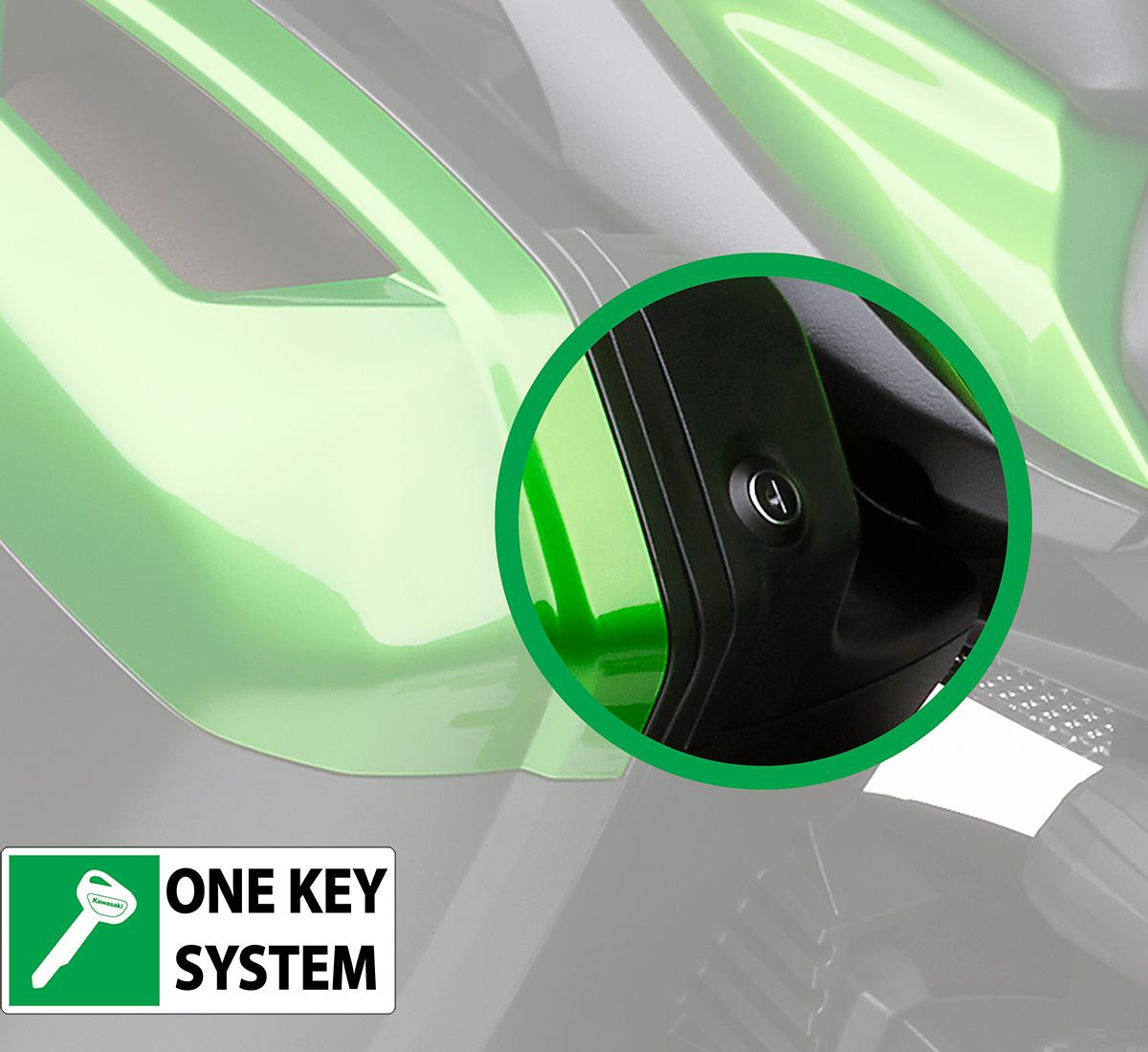
Give your Kawasaki Ninja 1000SX a more sporty look with the hexagonal shaped Carbon Akrapovič muffler. This lightweight slip-on is designed to be used together with our pannier system. Consists of a stainless steel inlet, carbon fiber muffler outer sleeve, carbon fiber end cap, Carbon fiber muffler clamp and a Co-branded Akrapovič heat resistant sticker. Carbon fiber heatshield set and fitting kit included. Complies with the applicable European standards.
Quick release 56L pannier set that will hold most full-face helmets. Panniers designed to attached to handgrips and footrest and give a clean sporty look when removed. Narrow mounting width of 93cm and suitable for high speed
cruising.
Set requires:
Give your Kawasaki a more sporty look with the hexagonal shaped Titanium Akrapovič muffler.
This lightweight slip-on is designed to be used together with our pannier system.
Consists of a stainless steel link pipe, stainless steel inlet/ titanium muffler outer sleeve, carbon fiber end cap, Carbon fiber muffler clamp and dual Akrapovič and Ninja 1000SX branded laser etched logo.
Carbon fiber heatshield set and fitting kit included.
Complies with the applicable European standards.
Rigid, water-resistant bag with compartments makes it easy to pack your cargo and drop into the locking Top Case. Once you have arrived at your destination, just grab your packed Inner Bag so you can leave the Top Case on your motorcycle and get going.
Keep your personal items in 47 liters of lockable, waterproof storage; enough room for two full-face helmets. Requires Base Plate and model specific accessories.
Help keep your hands warm on the road with a grip heater system ergonomically designed to minimize added bulk to the grip.
Help protect your motorcycle from tip-over damage.
Two-piece Gel Seat provides long-distance support and comfort for rider and passenger.
Developed in conjuction wih SP Connect the kit consists of a Clutch Mount, Anti-vibration module and a Universal Phone Clamp. Suits mosts mobile phones; Simply pull out the crown, screw it tight, and then push the crown back in to lock your phone in place. While remaining fully operable, your phone can now be attached to or detached from the mount in seconds.
Read MoreZippered black nylon liners make it easy to pack your cargo and drop into the locking panniers.
Once you’ve arrived at your destination, just grab your pannier inner bags so you can leave the panniers on your motorcycle and get going.
Stylish wheel rim tape to complete the look of your bike. (Set of 4 rings for 1 bike)
Read More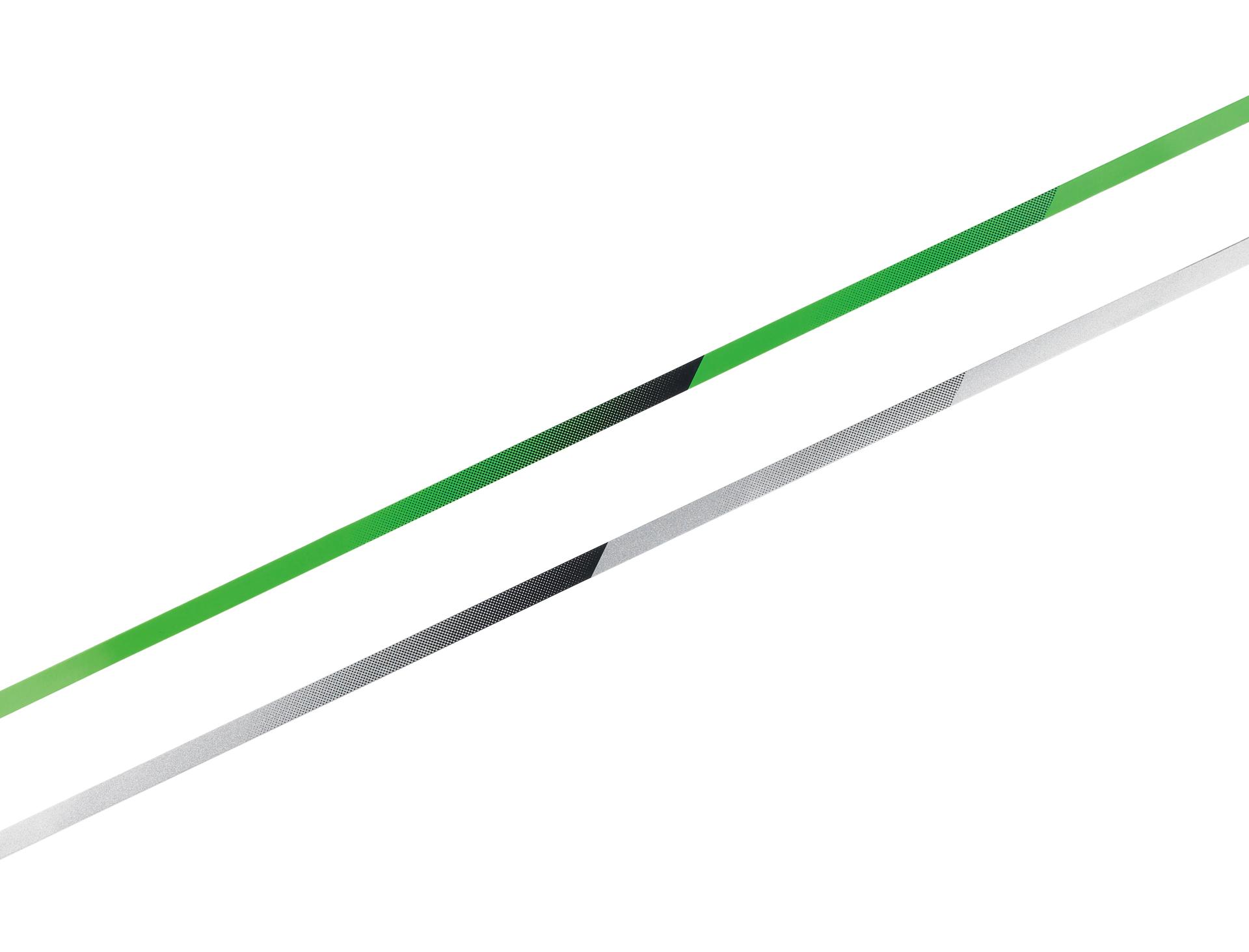
Stylish wheel rim tape to complete the look of your bike. (Set of 4 rings for 1 bike)
Read More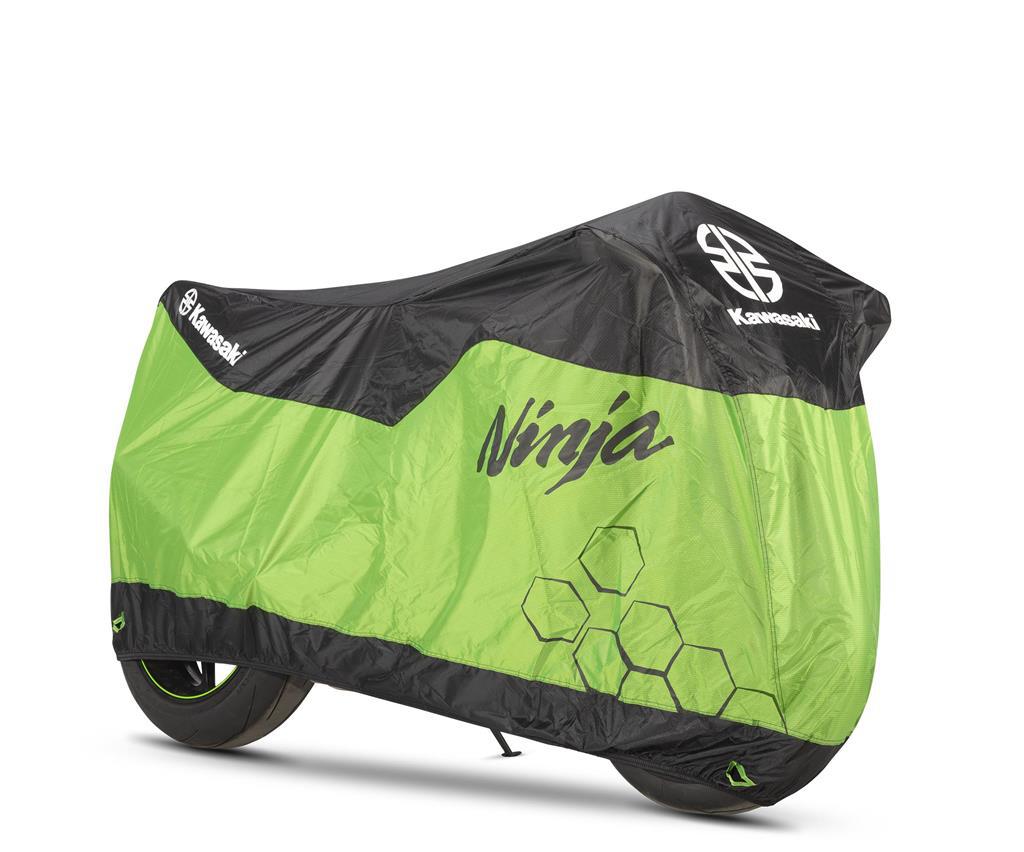
Made from strong Anti-tear Honeycomb ripstop fabric. Heat resistance till 120 degrees Celcius. Subtle branding.
100% Polyester. With multi usable (back)packing string bag.
Fits:
Soft polypropylene motorcycle cover, to protect your motorcycle from dust and other small particles. The breathable membrane allows the continuous circulation of air. Features a belly strap as well as an elastic band to ensure the cover stays in place. Size M, fits for example: Ninja 300, ER-6N, ZX-6, Z800, Z900, Z1000, W800, Z1000SX, ZX-10R, Z900RS, H2 & H2R. Size L, fits for example: Versys 650+panniers (w/o Top case), Versys 1000+panniers (w/o Top case), Vulcan S, ZZR14, J300, Z1000SX + panniers, Versys-X 300, J125/J300.
Read MoreSoft polypropylene motorcycle cover, to protect your motorcycle from dust and other small particles. The breathable membrane allows the continuous circulation of air. Features a belly strap as well as an elastic band to ensure the cover stays in place. Size M, fits for example: Ninja 300, ER-6N, ZX-6, Z800, Z900, Z1000, W800, Z1000SX, ZX-10R, Z900RS, H2 & H2R. Size L, fits for example: Versys 650+panniers (w/o Top case), Versys 1000+panniers (w/o Top case), Vulcan S, ZZR14, J300, Z1000SX + panniers, Versys-X 300, J125/J300.
Read MoreAn essential tool for motorcycle enthusiasts and mechanics alike. Designed to provide stability and convenience, this paddock stand allows easy access to the wheels, suspension, and other components.
This premium rear bike stand can be disassembled, making transportation a lot easier. The compact bike stand comes in a shop worthy carrying case with a built-in carrying handle. The stand is made of premium steel and has a green and black finish. The Kawasaki logo is laser cut in steel.
Optional are the forks to suit your preference;
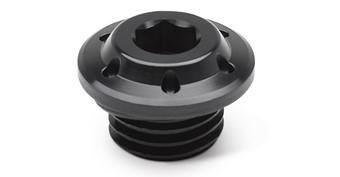
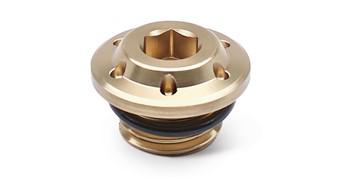
CNC machined billet aluminium Oil Filler Cap with gold finish Note: Compatibility and availability of accessories may vary per specific model year, please check with your Kawasaki Dealer on availability and additional parts needed for installation
Read More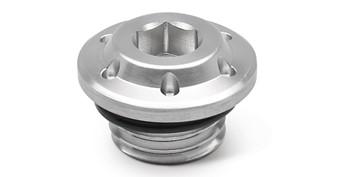
Whether you want to park your bike in a pitbox or in your garage, let your precious machine rest in style on this Kawasaki Garage Mat. The mat meets new FIM environmental codes and offers a high level of absorption and dust-control features.
Made from strong Anti-tear Honeycomb ripstop fabric. Heat resistance till 120 degrees Celcius. Subtle branding.
100% Polyester. With multi usable (back)packing string bag.
Fits:
Discover your next adventure
Ride challenge level. Plan windy and hilly roads
Discover the world's best curated riding routes, exclusively
Updates via Wi-Fi®. No computer needed
Discover, personalize and enjoy stunning riding routes with MyDrive
Compatible with Siri and Google Now™
Smartphone messages read aloud, hands-free calling
Lifetime* Worldwide Maps, TomTom Traffic and Services
Double the processing speed and five times faster start-up
